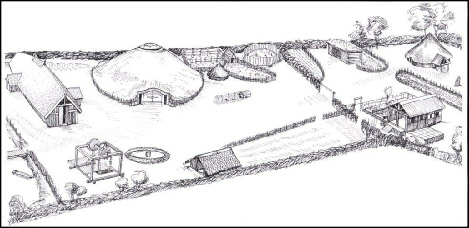



The ATC is a working farmstead and as such, animals play a significant role in our teaching and day to day running.
We currently have a small selection of breeds that reflect the needs of an ancient family. Space is limited so we keep small numbers and use them in conjunction with our agricultural program to aid the site.



Our pigs are Wild Boar/Tamworth cross and are useful to us in many ways. They are incredible earth movers and they have successfully terraced their three pens by levelling the earth. Our rotations see the pigs preparing our small fields before we plough. We are wondering if this would have been the ideal way to create strip lynchets in the past.
Their meat (venison – a term used for any animal of the hunt long ago) is rich and delicious. Like our sheep, we use as much of the animal as possible – its hair for brush making, bones for carving, fat for lamp making and of course its meat is salted and cured.





The ATC have recently introduced a breeding pair of rare breed chickens to its collection
of animals. The Silver-
The Dorking chicken has an ancient heritage and is recorded in detail by the Roman
agricultural writer Columella. He describes the chicken as “square-
Although Victorian breeders adjusted many aspects of the original bird, it still maintains many of its ancient characteristics, maturing slowly, exhibiting a square body shape and crucially, having five toes rather than the usual four on each foot!!.
Our intention is to attempt to breed from our cockerel and hen and build up a small stock of these interesting birds for teaching, egg production and eating purposes. We expect them to be very different from our modern battery rescue birds, but far more in keeping with our ancient ethos.
Soay sheep are thought to be a remnant population of the oldest domesticated sheep in Europe, first recorded on the island of Soay in the early 1500’s. They are extremely hardy, nimble, can jump like kangaroos and appear to survive on almost anything! Our sheep are used for breeding, and meat production. As with any of our animals, we try to use as much of the animal as possible, wool for weaving, skins for tanning and leather making, bones for needles and combs.
Our surplus meat is smoked or salted and then hung in our buildings. Our salted Soay meat has survived in an edible state for two and a half years!


